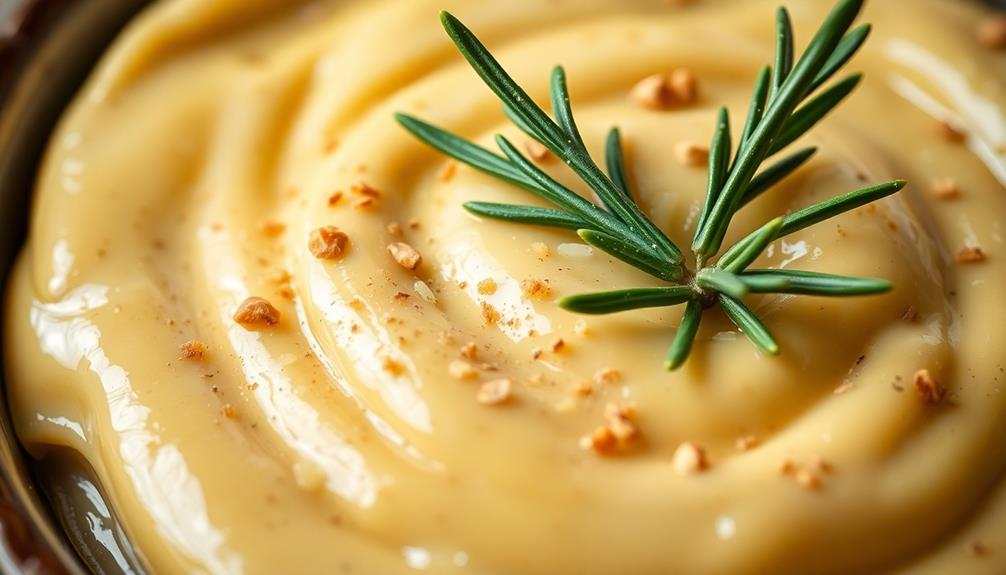If you've got a sensitive stomach, you don't have to miss out on delightful desserts! Low-FODMAP treats use thoughtful ingredients like lactose-free milk, almond flour, and fresh fruit to satisfy your sweet tooth without triggering digestive discomfort. From creamy crème brûlée to fluffy baked goods, the options are diverse and delicious. Start by preheating the oven, mixing dry and wet ingredients, and baking until perfectly golden. As you explore these gut-friendly delights, you'll discover a world of desserts that fuel both your tastebuds and your wellbeing. Keep reading to dive deeper into the wonders of low-FODMAP sweets.
Key Takeaways
- Low-FODMAP desserts offer a range of sweet options tailored for individuals with sensitive digestive systems, particularly those managing Irritable Bowel Syndrome (IBS).
- Suitable ingredients for low-FODMAP desserts include lactose-free dairy alternatives, gluten-free flours, and fruits like strawberries and blueberries.
- Cooking techniques for low-FODMAP desserts emphasize proper preheating and baking to achieve the desired texture and consistency.
- Experimenting with low-FODMAP dessert recipes encourages culinary creativity while promoting overall gut health.
- Maintaining a food diary and seeking professional guidance can help individuals manage their dietary needs and find the right low-FODMAP desserts.
History
The low-FODMAP diet was first developed in the early 2000s by researchers at Monash University in Australia. They realized that certain carbohydrates, called FODMAPs, can trigger digestive issues in people with conditions like irritable bowel syndrome (IBS).
By limiting these FODMAPs, the diet helps manage symptoms like bloating, gas, and abdominal pain.
Initially, the focus was on savory foods, but as the diet grew in popularity, people craved low-FODMAP desserts too. Bakers and chefs got creative, finding ways to make sweet treats that are gentle on sensitive stomachs.
They experimented with alternative flours, sugars, and dairy-free options to create delicious cakes, cookies, and other indulgences that fit the low-FODMAP guidelines.
Today, low-FODMAP desserts are a thriving part of the diet, offering a wide variety of satisfying options. From cookies to cakes, these treats are specially formulated to cater to those with sensitive digestive systems. They allow individuals to indulge their sweet tooth while still meeting their **nutritional needs on a low-FODMAP diet**. Additionally, many recipes are crafted to use gluten-free and lactose-free ingredients, ensuring a broader range of dietary restrictions are respected.
With the right recipes, you can enjoy the pleasures of dessert without the discomfort. It's a win-win for your taste buds and your digestion.
Recipe
Eating a low-FODMAP diet doesn't mean you have to give up dessert. These sweet treats are designed to be gentle on the digestive system while still satisfying your cravings. The key is to use low-FODMAP ingredients that are less likely to trigger unpleasant symptoms.
This recipe for a classic crème brûlée is a perfect example. The custard base is made with lactose-free milk and cream, while the caramelized topping provides a delightful crunch. Enjoy this decadent dessert as an occasional indulgence on your low-FODMAP journey.
Ingredients:
- 2 cups lactose-free heavy cream
- 1 vanilla bean, split lengthwise
- 5 large egg yolks
- 1/2 cup white sugar, plus more for caramelizing
Instructions:
In a medium saucepan, combine the lactose-free cream and vanilla bean. Heat the mixture over medium, stirring occasionally, until it just begins to simmer. Remove from heat and let sit for 30 minutes to infuse the cream with vanilla flavor.
In a medium bowl, whisk the egg yolks and 1/2 cup of sugar until smooth. Slowly pour the warm cream into the egg yolk mixture, whisking constantly. Strain the custard through a fine-mesh sieve, then divide it evenly among four 6-ounce ramekins. Bake at 325°F for 30-35 minutes, until the centers are just set. Refrigerate for at least 2 hours before serving.
When ready to serve, sprinkle a thin, even layer of sugar over the top of each chilled custard. Use a kitchen torch to caramelize the sugar, creating a crisp, golden-brown topping. Serve immediately.
Cooking Steps
First, preheat your oven to 350°F.
Next, mix the dry ingredients together in a bowl.
Then, add the wet ingredients and stir until everything's well combined.
Finally, pop the mixture into the oven and bake until it's a lovely golden brown.
Don't forget to let it cool completely before enjoying your low-FODMAP treat!
Step 1. Preheat Oven to 350°F
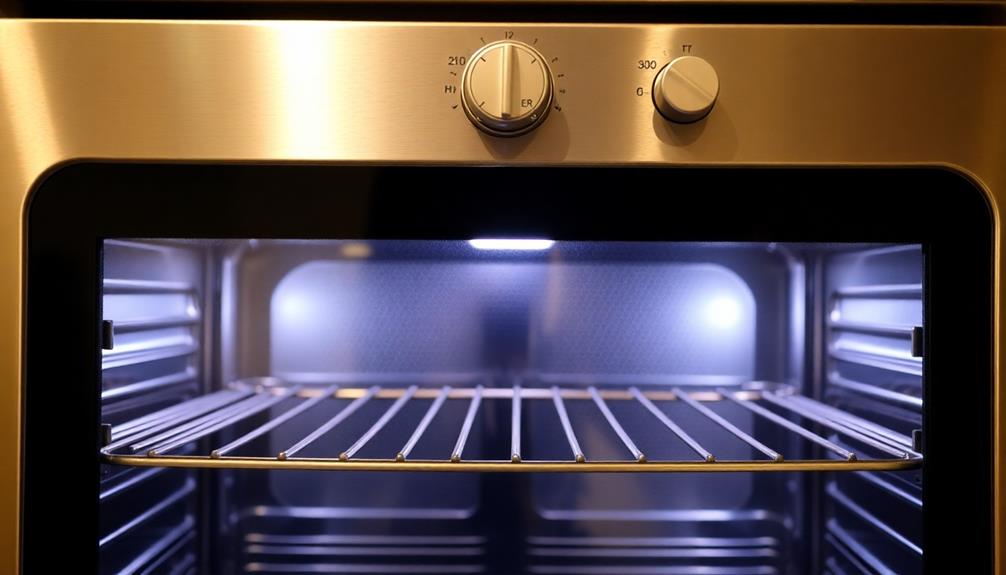
To begin the cooking process, preheat your oven to 350°F. This crucial first step ensures your oven is at the right temperature before you begin baking your low-FODMAP dessert.
It's important to give the oven time to fully heat up, which typically takes around 10-15 minutes.
Once the oven reaches 350°F, you're ready to start preparing your recipe. This consistent temperature is essential for proper cooking and ensuring your baked goods turn out perfectly.
Keep in mind that oven temperatures can vary, so you may need to adjust the baking time accordingly. Use an oven thermometer if you're unsure about your oven's accuracy.
Preheating the oven is a simple but vital step that sets the stage for baking success.
With your oven ready to go, you can now move on to mixing up your low-FODMAP ingredients and getting your delicious dessert in the oven.
Just remember to keep a close eye on the baking time to achieve the best possible results.
Step 2. Mix Dry Ingredients
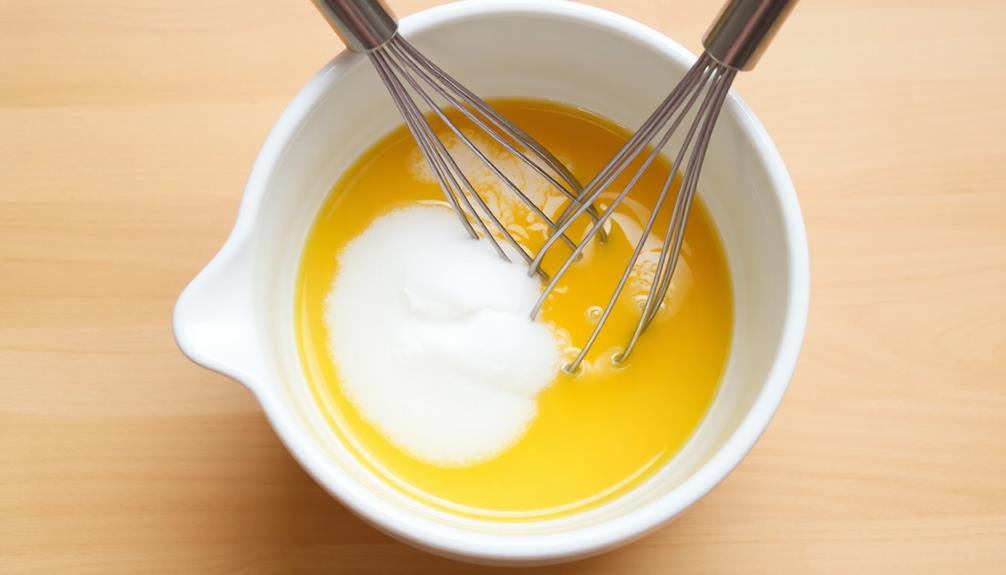
Next, mix together the dry ingredients in a large bowl.
You'll need to whisk together 1 1/2 cups of gluten-free flour, 1/2 cup of almond flour, 1 teaspoon of baking powder, and 1/4 teaspoon of salt.
Be sure to break up any lumps in the flours as you mix. This step ensures your dry ingredients are evenly distributed, which will help create a light and tender texture in your low-FODMAP dessert.
Once the dry ingredients are well combined, set the bowl aside.
You'll come back to add these in just a bit.
Now it's time to work on the wet ingredients. This is an important step, as getting the right balance of moisture is key for any successful low-FODMAP bake.
Pay close attention to the next set of instructions to make sure your dessert turns out perfectly every time.
Step 3. Add Wet Ingredients
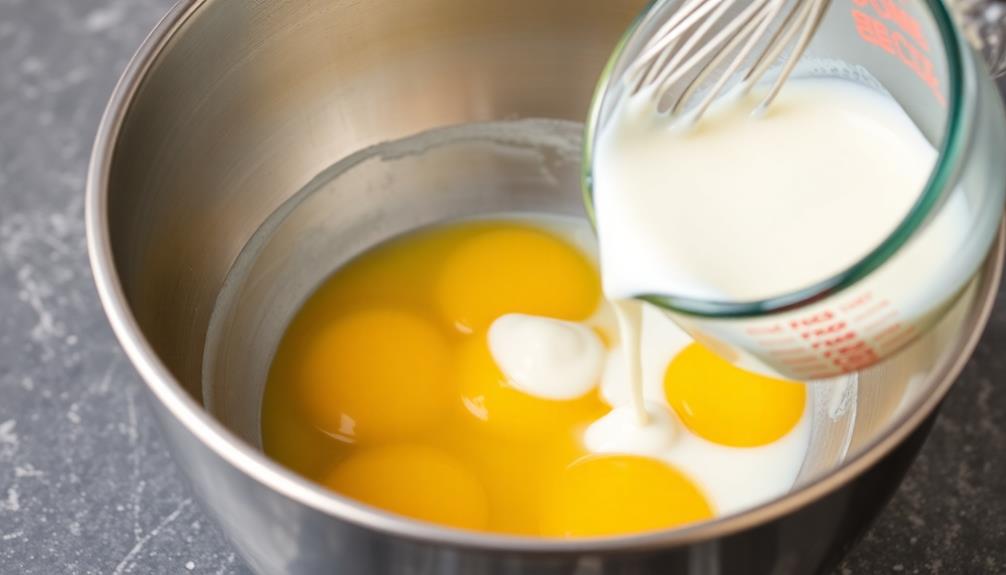
In a separate bowl, combine the wet ingredients. First, add the milk or dairy-free milk alternative you've chosen. Whisk it together with the melted butter or oil.
Then, crack in the eggs and lightly beat them until they're fully incorporated. Don't forget to stir in the vanilla extract too – it'll add a lovely flavor.
Once the wet ingredients are well mixed, it's time to slowly pour them into the bowl with the dry ingredients. Gently fold everything together using a spatula, being careful not to overmix. You want to keep the batter light and airy.
Scrape down the sides of the bowl to make sure all the dry bits get mixed in. The final batter should have a smooth, uniform consistency.
Now you're ready to transfer the low-FODMAP dessert batter to your prepared baking pan or dishes. Remember to spread it out evenly so it cooks through completely.
With the wet and dry ingredients combined, you're one step closer to enjoying a delicious, digestive-friendly treat!
Step 4. Bake Until Golden Brown
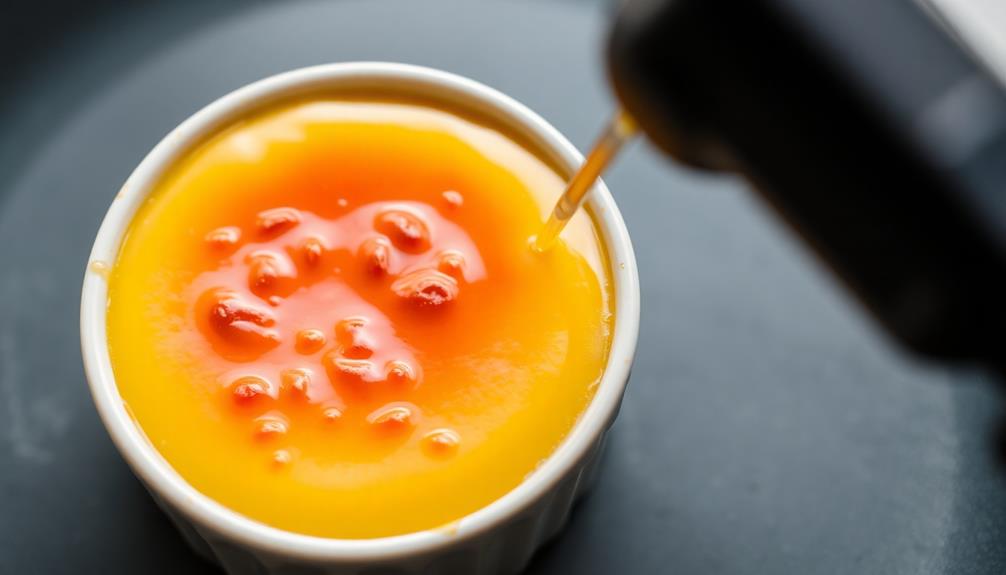
After transferring the batter to your prepared pan, it's time to pop it in the oven.
You'll want to bake your low-FODMAP dessert until it's golden brown on top, which should take around 20-25 minutes. Keep a close eye on it, as oven temperatures can vary. The top should be lightly browned, and a toothpick inserted in the center should come out clean when it's done.
Once the dessert is baked, let it cool in the pan for a few minutes before transferring it to a wire rack. This helps the structure set and prevents it from falling apart.
You can then slice it and serve it warm or at room temperature. Pair it with a scoop of dairy-free ice cream or a dollop of whipped coconut cream for an extra special treat.
Step 5. Allow to Cool Completely
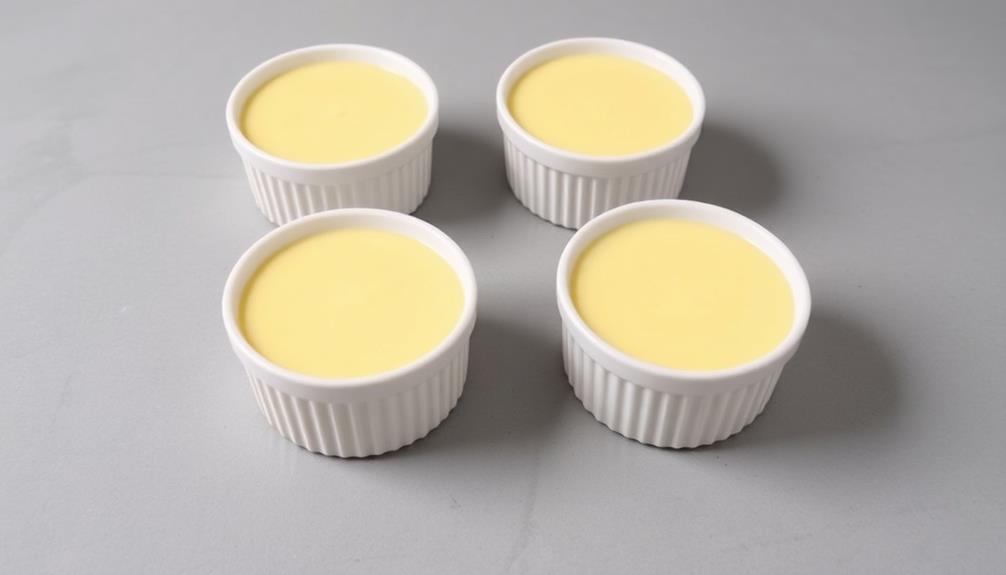
Once your low-FODMAP dessert has finished baking, you'll want to let it cool completely before attempting to slice or serve it. This cooling process is crucial to ensure the proper texture and structure of your sweet treat. As the dessert cools, the ingredients will set and firm up, making it much easier to handle without crumbling or falling apart.
Be patient and resist the temptation to dig in right away. Depending on the size and complexity of your dessert, this cooling period can take anywhere from 30 minutes to an hour or more. If you try to serve it too soon, you may end up with a gooey, messy disaster on your hands.
Once the dessert has reached room temperature, you can then transfer it to the refrigerator to chill completely if the recipe calls for it. This extra cooling time will result in clean, precise slices or servings that retain their shape and integrity.
Allowing your low-FODMAP dessert to cool fully is an important final step to achieve the perfect low-FODMAP indulgence.
Final Thoughts
Ultimately, embracing low-FODMAP desserts can be a rewarding journey. You've discovered that these sweet treats offer a delicious solution for those with sensitive stomachs.
By focusing on ingredients that are gentle on the digestive system, you can indulge your cravings without worrying about unpleasant side effects.
As you continue to explore low-FODMAP dessert recipes, remember to listen to your body and make adjustments as needed.
What works well for one person may not be the perfect fit for another. Experiment with different ingredients and techniques to find the combinations that truly make your taste buds and your tummy happy.
Frequently Asked Questions
What Are the Primary Causes of FODMAP Sensitivity?
You may have FODMAP sensitivity if you experience digestive issues like bloating, gas, and abdominal pain after eating certain carbohydrates. The primary causes are an intolerance to specific types of short-chain carbohydrates found in many common foods.
How Do I Identify Fodmap-Friendly Ingredients?
To identify FODMAP-friendly ingredients, look for foods low in fermentable carbohydrates like fruits, vegetables, grains, and proteins that don't contain high-FODMAP components. Check ingredient lists and consult FODMAP guides to ensure you're selecting suitable options.
Can I Substitute Regular Sugar for Low-Fodmap Sweeteners?
Yes, you can substitute regular sugar for low-FODMAP sweeteners. Many low-FODMAP sweeteners, like maple syrup or honey, can be used in place of sugar in recipes. Just be mindful of the serving size and adjust as needed.
How Do I Adjust Recipes to Be Low-Fodmap?
To adjust recipes to be low-FODMAP, you'll need to substitute high-FODMAP ingredients like regular sugar, honey, and high-lactose dairy with low-FODMAP alternatives. This may involve trial and error to get the right texture and flavor.
Are There Any Tips for Managing Fodmap-Related Digestive Issues?
To manage FODMAP-related digestive issues, try keeping a food journal, identifying trigger foods, and gradually reintroducing them. Experiment with portion sizes and low-FODMAP substitutions. Stay hydrated and engage in regular exercise to support gut health.



